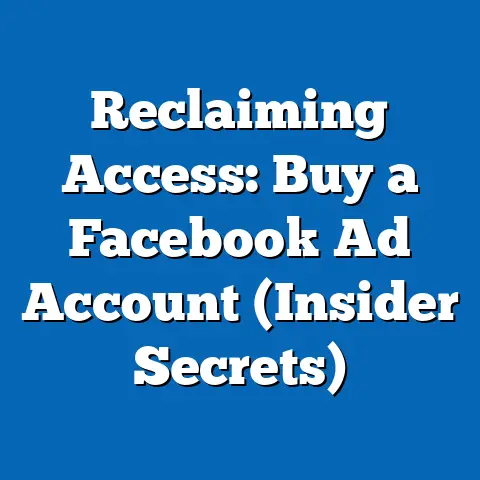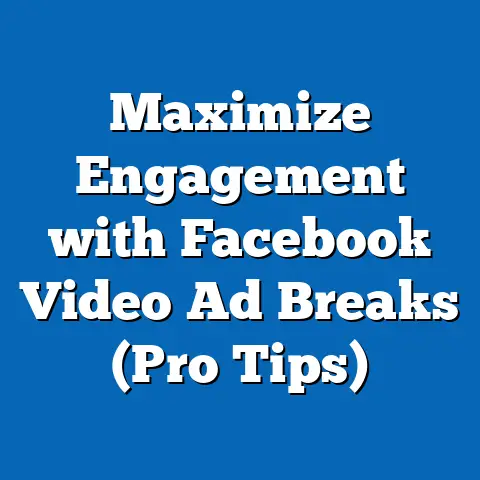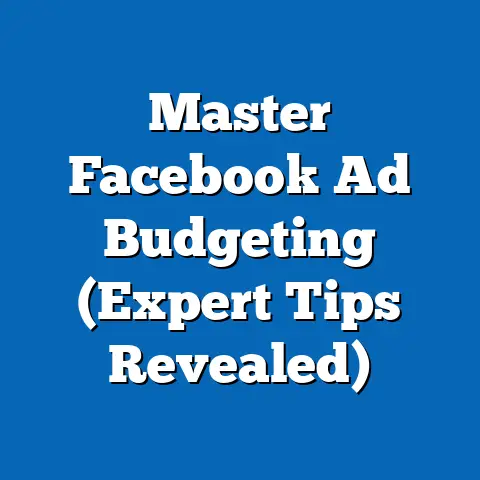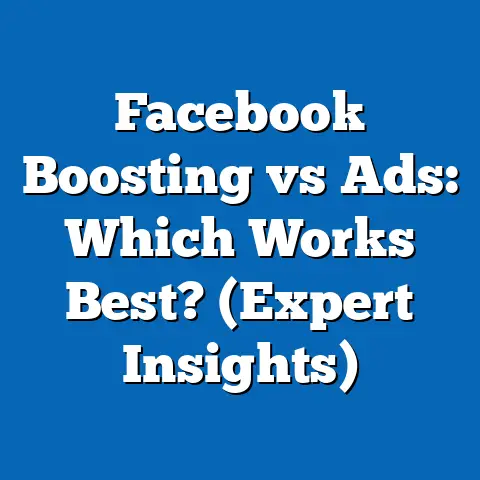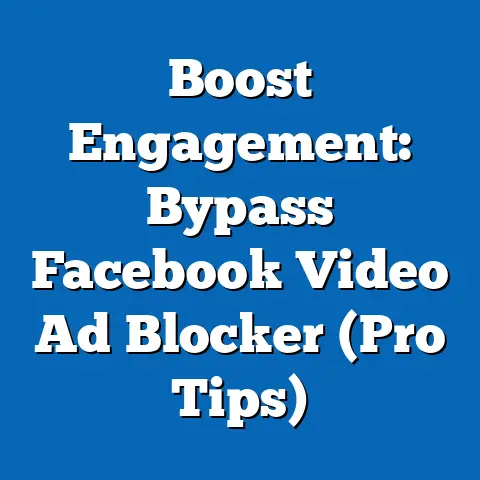Unlock 99 Facebook Ads That Drive Results (Proven Strategies)
The digital marketing landscape is a relentless force, constantly shifting and demanding that we, as marketers, adapt or risk being left behind. Nowhere is this more evident than in the world of Facebook advertising. What worked last year might be obsolete today, and what’s trending now could be old news tomorrow. This dynamic environment is what makes Facebook advertising both challenging and incredibly rewarding.
I’ve been navigating these digital currents for years, and I’ve seen firsthand the transformative power of a well-crafted Facebook ad. It’s not just about throwing money at the platform; it’s about understanding your audience, crafting compelling messages, and constantly optimizing your campaigns. When done right, Facebook ads can reach hyper-targeted audiences, drive significant conversions, and ultimately, fuel business growth.
Consider this: Facebook boasts billions of active users, a treasure trove of potential customers just waiting to be discovered. Studies show that businesses that effectively leverage Facebook ads see significant improvements in brand awareness, lead generation, and sales. The key, however, lies in knowing how to navigate the platform’s complexities and implement strategies that resonate with your target audience.
In this article, I’m going to share 99 proven Facebook ad strategies that have worked for businesses across various industries. These aren’t just theoretical concepts; they’re battle-tested tactics that I’ve seen deliver real results. So, buckle up and get ready to unlock the potential of Facebook ads and take your marketing to the next level!
Understanding the Facebook Ads Landscape
Before we dive into the specific strategies, let’s take a moment to understand the lay of the land. The Facebook advertising ecosystem is vast and diverse, offering a multitude of ad formats, targeting options, and campaign objectives. It’s crucial to have a solid grasp of these fundamental elements to build a foundation for successful campaigns.
One of the first things you’ll notice is the sheer variety of ad types available. From simple image ads to engaging video ads and interactive carousel ads, Facebook offers a format to suit every message and objective. Each type has its strengths and weaknesses, and choosing the right one depends on your target audience, the story you want to tell, and the overall goal of your campaign.
But the real magic of Facebook advertising lies in its unparalleled audience targeting capabilities. You can target users based on demographics, interests, behaviors, and even connections. This level of granularity allows you to reach the right people with the right message at the right time, maximizing your ad spend and driving conversions.
And don’t think Facebook is resting on its laurels. The platform is constantly evolving, incorporating new technologies like AI and machine learning to enhance ad placements and provide deeper insights into campaign performance. Keeping up with these innovations is essential for staying ahead of the curve and maximizing your ROI.
Now, let’s get to the good stuff: the 99 proven strategies that will help you unlock the full potential of Facebook ads.
Proven Strategies for Facebook Ads
1. Eye-Catching Visuals
In the crowded world of social media, your ad has mere seconds to grab attention. That’s why high-quality, visually appealing images and videos are crucial.
- Use professional-grade photos: Avoid blurry or low-resolution images. Invest in professional photography or use high-quality stock photos.
- Create attention-grabbing videos: Short, dynamic videos are incredibly effective. Use compelling visuals, music, and text overlays to capture attention.
- Optimize for mobile: Most Facebook users are on mobile devices. Ensure your visuals look great on smaller screens.
- Example: A clothing brand used a stunning lifestyle image of a model wearing their latest collection. The image was professionally shot, well-lit, and showcased the clothing in an aspirational setting. This ad generated a high click-through rate and drove significant sales.
Takeaway: Invest in high-quality visuals that capture attention and showcase your brand in the best possible light.
2. Compelling Copywriting
Even the most beautiful visual will fall flat without persuasive ad copy. Your copy should be concise, engaging, and relevant to your target audience.
- Write clear and concise headlines: Get straight to the point and highlight the key benefit of your product or service.
- Use persuasive language: Use words that evoke emotion and create a sense of urgency.
- Include a strong call to action (CTA): Tell people exactly what you want them to do (e.g., “Shop Now,” “Learn More,” “Sign Up”).
- Example: An online course provider used the headline “Unlock Your Potential: Enroll in Our Expert-Led Course Today!” This headline was clear, concise, and highlighted the key benefit of the course. The CTA, “Enroll Now,” was direct and encouraged immediate action.
Takeaway: Craft compelling ad copy that grabs attention, highlights key benefits, and encourages action.
3. Audience Targeting
Facebook’s targeting capabilities are a game-changer. Use them wisely to reach the people who are most likely to be interested in your product or service.
- Define your ideal customer: Create a detailed customer persona that includes demographics, interests, behaviors, and pain points.
- Use Facebook’s targeting options: Leverage Facebook’s detailed targeting options to reach your ideal customer.
- Create lookalike audiences: Expand your reach by creating lookalike audiences based on your existing customer base.
- Example: A local restaurant targeted users within a 5-mile radius who were interested in food, dining, and local restaurants. They also created a lookalike audience based on their existing customer list. This targeted approach resulted in a significant increase in reservations and foot traffic.
Takeaway: Leverage Facebook’s targeting capabilities to reach the right people with the right message.
4. A/B Testing
Never assume you know what will work best. Always test different ad variations to optimize your campaigns for maximum performance.
- Test different headlines: Experiment with different headlines to see which ones generate the most clicks.
- Test different visuals: Try different images and videos to see which ones resonate with your audience.
- Test different CTAs: Experiment with different CTAs to see which ones drive the most conversions.
- Example: An e-commerce store tested two different ad variations: one with a product-focused image and another with a lifestyle image. The lifestyle image generated a significantly higher click-through rate and conversion rate.
Takeaway: Continuously A/B test different ad variations to optimize your campaigns for maximum performance.
5. Retargeting Strategies
Don’t let potential customers slip through the cracks. Retargeting allows you to re-engage users who have previously interacted with your brand.
- Retarget website visitors: Show ads to people who have visited your website but haven’t made a purchase.
- Retarget users who have engaged with your content: Show ads to people who have liked, commented on, or shared your Facebook posts.
- Retarget users who have watched your videos: Show ads to people who have watched a certain percentage of your videos.
- Example: A software company retargeted users who had visited their pricing page but hadn’t signed up for a free trial. They showed these users an ad highlighting the benefits of the free trial and offering a limited-time discount. This retargeting campaign resulted in a significant increase in free trial sign-ups.
Takeaway: Retarget users who have previously interacted with your brand to re-engage them and drive conversions.
6. Seasonal and Event-Based Ads
Capitalize on holidays and special events to create timely and relevant ads.
- Create holiday-themed ads: Run special promotions and discounts during holidays like Christmas, Thanksgiving, and Valentine’s Day.
- Create event-based ads: Promote events like concerts, festivals, and conferences.
- Align your messaging with the season: Use language and imagery that reflects the current season.
- Example: A flower shop ran a Valentine’s Day ad featuring a beautiful bouquet of roses and offering a special discount for online orders. This ad generated a surge in sales leading up to Valentine’s Day.
Takeaway: Leverage seasonal and event-based opportunities to create timely and relevant ads.
7. User-Generated Content (UGC)
Harness the power of social proof by incorporating user-generated content into your ads.
- Encourage customers to share their experiences: Ask customers to share photos and videos of themselves using your product or service.
- Feature UGC in your ads: Showcase positive reviews and testimonials in your ads.
- Run contests and giveaways: Encourage users to create content in exchange for a chance to win prizes.
- Example: A travel company featured photos and videos submitted by their customers in their ads. These ads were much more engaging and authentic than traditional marketing materials.
Takeaway: Incorporate user-generated content into your ads to build trust and authenticity.
8. Influencer Collaborations
Partner with influencers to reach a wider audience and build credibility.
- Identify relevant influencers: Find influencers who align with your brand and have a loyal following.
- Collaborate on ad campaigns: Work with influencers to create engaging and authentic ad content.
- Track your results: Monitor the performance of your influencer marketing campaigns to measure ROI.
- Example: A beauty brand partnered with a popular beauty blogger to create a series of videos showcasing their products. These videos were shared on the blogger’s Facebook page and promoted through Facebook ads. This collaboration resulted in a significant increase in brand awareness and sales.
Takeaway: Collaborate with relevant influencers to reach a wider audience and build credibility.
9. Utilizing Facebook Stories
Don’t underestimate the power of Facebook Stories. This format is perfect for capturing attention and driving engagement.
- Create short and engaging videos: Stories are meant to be quick and easy to consume.
- Use interactive features: Incorporate polls, quizzes, and questions to encourage engagement.
- Promote your products or services: Showcase your products or services in a visually appealing way.
- Example: A food delivery service used Facebook Stories to showcase their daily specials and offer exclusive discounts. This strategy resulted in a significant increase in orders placed through Facebook Stories.
Takeaway: Utilize Facebook Stories to create engaging and interactive ads.
10. Analyzing Ad Performance
Data is your best friend. Monitor your ad performance metrics to identify what’s working and what’s not.
- Track key performance indicators (KPIs): Focus on metrics like click-through rate (CTR), conversion rate, cost per acquisition (CPA), and return on ad spend (ROAS).
- Use Facebook Analytics: Leverage Facebook Analytics to gain deeper insights into your audience and campaign performance.
- Iterate based on results: Continuously optimize your campaigns based on the data you collect.
- Example: An online retailer noticed that their ads were generating a high click-through rate but a low conversion rate. They analyzed their website and discovered that their checkout process was too complicated. They simplified the checkout process and saw a significant increase in conversion rates.
Takeaway: Continuously analyze your ad performance metrics and iterate based on the data you collect.
Case Studies of Successful Ads
Let’s take a look at a few real-world examples of businesses that have successfully utilized these strategies to drive results with Facebook ads.
Case Study 1: Local Coffee Shop
A local coffee shop wanted to increase foot traffic and promote their new seasonal menu. They ran a Facebook ad campaign targeting users within a 3-mile radius who were interested in coffee, cafes, and local businesses. The ad featured a mouth-watering image of their new pumpkin spice latte and offered a 10% discount to customers who showed the ad at the counter. This campaign resulted in a significant increase in foot traffic and sales of their seasonal menu items.
Key Strategies Used:
- Eye-Catching Visuals
- Compelling Copywriting
- Audience Targeting
- Seasonal and Event-Based Ads
Case Study 2: Online Clothing Boutique
An online clothing boutique wanted to increase brand awareness and drive sales of their new summer collection. They ran a Facebook ad campaign featuring user-generated content. They asked their customers to share photos of themselves wearing their clothing and offered a chance to win a gift card. The ads featured these user-submitted photos and included a link to their website. This campaign resulted in a significant increase in brand awareness and sales.
Key Strategies Used:
- Eye-Catching Visuals
- User-Generated Content (UGC)
- Compelling Copywriting
Case Study 3: Tech Startup
A tech startup wanted to generate leads for their new software product. They ran a Facebook ad campaign targeting users who were interested in marketing, sales, and technology. The ad featured a short video showcasing the key features of their product and offered a free trial. They also retargeted users who had visited their website but hadn’t signed up for a free trial. This campaign resulted in a significant increase in leads and free trial sign-ups.
Key Strategies Used:
- Eye-Catching Visuals
- Compelling Copywriting
- Audience Targeting
- Retargeting Strategies
Conclusion
Facebook advertising is a powerful tool that can help businesses of all sizes achieve their marketing goals. By understanding the platform’s capabilities and implementing proven strategies, you can reach a wider audience, drive more conversions, and ultimately, grow your business.
Remember, the key to success with Facebook ads is to constantly test, analyze, and optimize your campaigns. The digital landscape is constantly evolving, so you need to stay agile and adapt your strategies as needed.
I encourage you to take action and implement these strategies into your own Facebook ad campaigns. Start small, test different approaches, and track your results. With creativity, persistence, and a data-driven approach, you can unlock the full potential of Facebook ads and achieve your business goals. Good luck!

